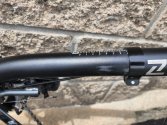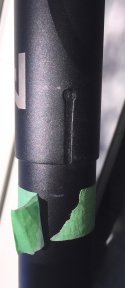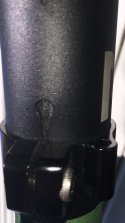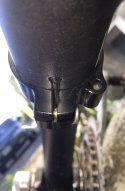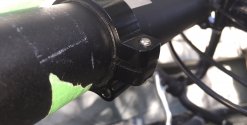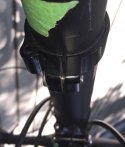CruzinCambridge
Active Member
My longest ride to date and I hit a "lip" in the pavement. It's a 1-1.5" bump where they had ground away the pavement to repave the transition from the road onto a bridge.
When I hit the lip hard, at about 15-20 mph, my boom slides out about 3cm from 4 to 7 (see photo). With my ankles at full extension and already in a lower gear I was able to keep going which was good as it's a busy section of road. No damage to my rims and no sealant issues.
Question for the experienced riders... is this common? I have the plastic collar on the boom cranked down pretty tight (est 7 nm?) but I've been wary of clamping it down too hard since reading @Robert Holler's post on not breaking the bottom bracket. Is this common? Is there anything I should be doing? Clamping it harder? Grip paste on the inside of the upper boom? Am I positioning the clamp at the right spot (at the very end of the upper boom)?
When I hit the lip hard, at about 15-20 mph, my boom slides out about 3cm from 4 to 7 (see photo). With my ankles at full extension and already in a lower gear I was able to keep going which was good as it's a busy section of road. No damage to my rims and no sealant issues.
Question for the experienced riders... is this common? I have the plastic collar on the boom cranked down pretty tight (est 7 nm?) but I've been wary of clamping it down too hard since reading @Robert Holler's post on not breaking the bottom bracket. Is this common? Is there anything I should be doing? Clamping it harder? Grip paste on the inside of the upper boom? Am I positioning the clamp at the right spot (at the very end of the upper boom)?

